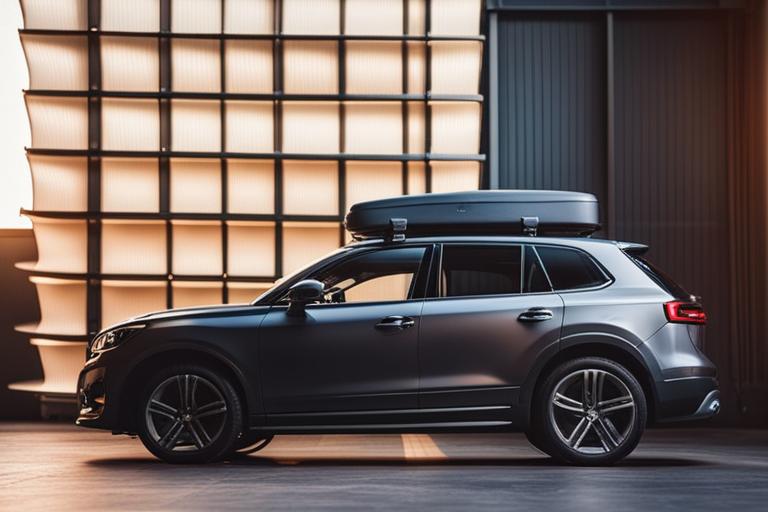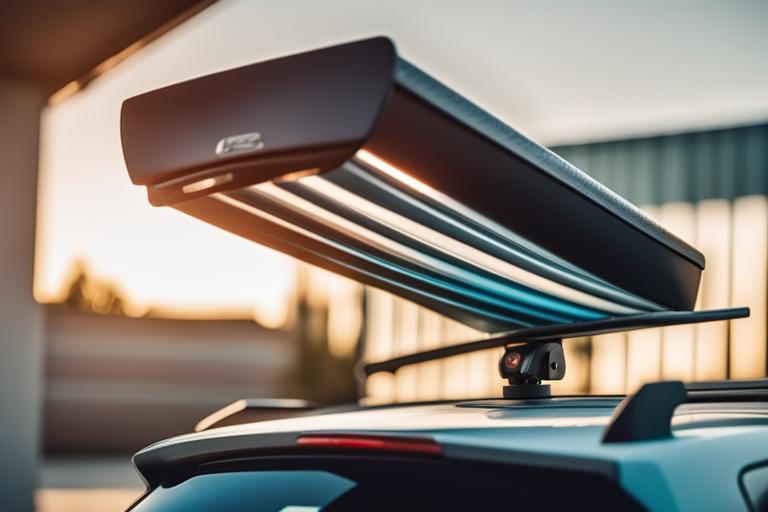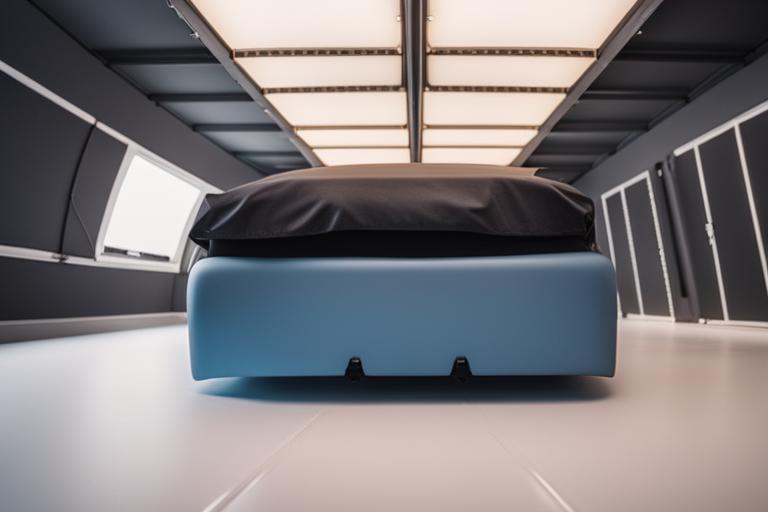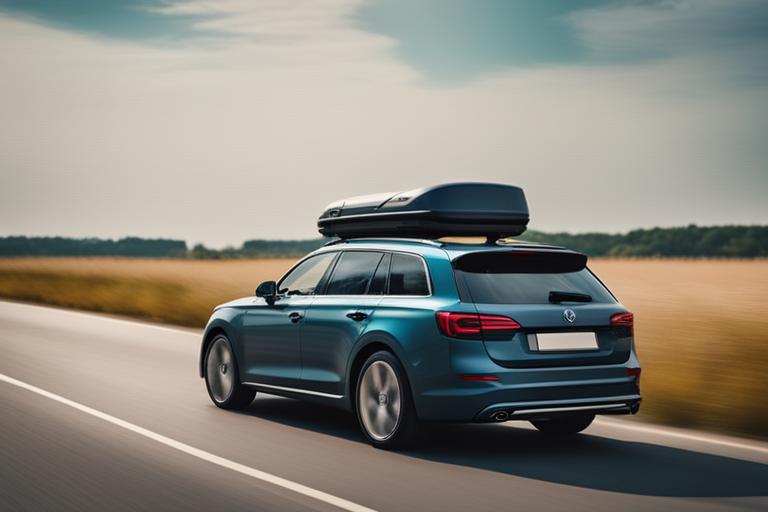
Are you planning a long road trip and need extra storage space? A roof box is an excellent option, but the wind passing over the box can create a lot of noise, affecting your driving experience. In this article, we will explore some tips on how to reduce roof box noise, allowing you to enjoy a peaceful and comfortable ride.
Reduce Roof Box Noise on Your Next Road Trip
- Learn how to identify and reduce roof box noise
- Discover 7 hacks to reduce roof box noise
- Find out how to choose the right roof box, use a wind deflector, adjust the position, use padding, tighten the roof box, use a roof rack cover, reduce speed, avoid overloading, and perform regular maintenance.
What Causes Roof Box Noise?
Before we dive into the tips to reduce roof box noise, let’s identify the root cause of the problem. The most common causes of roof box noise are the wind passing over the box, vibrations from the box, and poor aerodynamic design of the box.
To determine the cause of the noise, listen carefully while driving. If the noise is from vibrations, check the fittings and mounting hardware. If the noise is from the wind passing over the box, it could be related to the aerodynamic design of the box.
| Factor | Description |
|---|---|
| Aerodynamic design | Look for a roof rack with an aerodynamic design that reduces wind resistance. A roof rack with a streamlined crossbar can reduce wind noise. |
| Material | Choose a roof rack made of lightweight materials like aluminum or carbon fiber. Heavy-duty roof racks can cause more wind resistance and noise. |
| Compatibility | Ensure that the roof rack is compatible with your vehicle. The roof rack should fit securely and not move while driving. |
| Noise reduction accessories | Look for a roof rack that comes with noise reduction accessories like wind deflectors, rubber strips, or foam padding. These accessories can significantly reduce wind noise. |

Choose the Right Roof Box
Choosing the right roof box is crucial in reducing roof box noise. Consider the following factors when purchasing a roof box:
- Aerodynamic design: Look for a roof box with an aerodynamic design that reduces wind resistance. A tapered shape can also reduce wind noise.
- Lightweight materials: A lighter roof box reduces the overall weight of the vehicle, reducing wind resistance and noise.
- Tapered shape: A tapered shape can reduce wind noise by allowing the wind to flow smoothly over the box.
Consider purchasing a roof box that reduces wind noise, such as Thule Motion XT, Yakima Skybox Carbonite, and INNO Wedge Plus.

Use a Wind Deflector
A wind deflector is a device that attaches to the front of the roof box and redirects the wind over the box, reducing wind noise. Here’s how to install a wind deflector:
- Clean the roof box and the area where the wind deflector will be mounted.
- Attach the wind deflector to the front of the roof box.
- Tighten the mounting hardware and ensure that the wind deflector is secured.
Wind deflectors come in different sizes and shapes, and there are affordable options available.
Adjust the Position of the Roof Box
The position of the roof box can affect the amount of wind noise it produces. Here’s how to adjust the position of the roof box:
- Loosen the mounting hardware of the roof box.
- Move the roof box forward or backward until the noise is minimized.
- Tighten the mounting hardware and ensure that the roof box is secured.
Mounting the roof box too far forward or back can affect the vehicle’s aerodynamics, leading to more wind resistance and noise.

Use Padding
Padding can reduce roof box noise by absorbing vibrations and reducing the amount of wind noise. Here are some types of padding you can use:
- Foam padding: Foam padding is the most common type of padding used for roof boxes. It’s easy to apply and can reduce wind noise significantly.
- Felt padding: Felt padding is a softer material that can reduce the amount of vibration and noise produced by the roof box.
To apply padding to the roof box, clean the roof box’s surface and ensure it’s dry. Then, apply the padding to the areas that come into contact with the roof rack.
Tighten the Roof Box
Ensure that the roof box is secured correctly to reduce noise. Loose fittings and mounting hardware can cause the roof box to vibrate, leading to more noise. Here’s how to tighten the roof box:
- Check the mounting hardware for tightness.
- Tighten any loose hardware.
- Ensure that the roof box is secured and doesn’t move while driving.
It’s also important to check the roof box regularly to ensure that it’s still secured correctly.
Use a Roof Rack Cover
A roof rack cover is a device that covers the roof rack, reducing wind resistance and noise. Here’s how to choose the right roof rack cover:
- Choose a cover made of durable material that can withstand harsh weather conditions.
- Ensure that the cover fits your roof rack correctly.
- Choose a cover that’s easy to install and remove.
Using a roof rack cover can also protect your roof rack from scratches and damage.
Reduce Speed
Driving at high speeds can increase wind noise. Slow down to minimize roof box noise. Slow driving can also reduce wind resistance and improve fuel efficiency. In windy conditions, adjust your speed accordingly to reduce the amount of wind noise.
Avoid Overloading
Overloading the roof box can cause vibrations and noise. Stay within the manufacturer’s weight limits to ensure a comfortable ride. Overloading can also affect the vehicle’s aerodynamics, leading to more wind resistance and noise.
Regular Maintenance
Regular cleaning and maintenance of the roof box can reduce wind resistance and noise. Dirt and debris can cause additional wind resistance and noise, affecting the vehicle’s aerodynamics. Here’s how to clean the roof box:
- Clean the roof box with a mild detergent and water.
- Rinse the roof box with clean water.
- Dry the roof box with a soft cloth.
Check the roof box for cracks or damage regularly. Repair or replace the roof box when necessary to minimize noise.
Personal Experience: A Road Trip with a Noisy Roof Box
Last summer, my family and I went on a road trip to explore the national parks in the western United States. We were excited to spend time together and see some of the most beautiful landscapes in the world. However, as soon as we hit the highway, we realized that our roof box was making a lot of noise. The wind passing over the box was causing a loud whistling sound that was making it difficult to have a conversation or enjoy the music on the radio.
At first, we tried to ignore the noise, hoping that it would go away as we got used to it. But after a few hours, it became unbearable. We tried turning up the volume on the radio, but that only made the noise more annoying. We even tried opening the windows to let some fresh air in, but that only made things worse.
We stopped at a rest area to see if we could do something about the noise. We tried adjusting the position of the box, tightening the straps, and even putting some padding inside, but nothing seemed to work. We were frustrated and disappointed that our road trip was being ruined by this noisy roof box.
Eventually, we decided to buy a wind deflector at a nearby store. We installed it on the roof rack and adjusted the position of the box again. To our surprise, the noise was significantly reduced. We could finally have a conversation without shouting, and we could enjoy the music without turning up the volume too loud.
From that moment on, our road trip became much more enjoyable. We could focus on the beautiful scenery around us and the time spent with our family, without being distracted by the annoying noise from the roof box. This experience taught us the importance of reducing roof box noise for a comfortable and enjoyable ride.

Conclusion
Reducing roof box noise is crucial for a comfortable and peaceful road trip. Follow these tips to reduce roof box noise: choose the right roof box, use a wind deflector, adjust the position of the roof box, use padding, tighten the roof box, use a roof rack cover, reduce speed, avoid overloading, and regular maintenance. By implementing these tips, you can enjoy a quieter and more comfortable ride without the annoying noise of the roof box.
Questions
Who experiences roof box noise and why?
Anyone using a roof box can experience noise due to wind resistance.
What causes roof box noise and how to reduce it?
The shape of the box and air resistance cause noise. Reduce speed and install wind deflectors.
How can I tell if my roof box is causing noise?
If you hear whistling or humming while driving, it’s likely the roof box.
What if wind deflectors don’t reduce roof box noise?
Check that the roof box is properly secured and adjust its position.
How fast should I be driving to reduce roof box noise?
Reduce speed to 55-65 mph to reduce wind noise from your roof box.
What if I don’t want to reduce speed or install wind deflectors?
You can try adding foam pads or rubber strips to the roof box to reduce noise.






